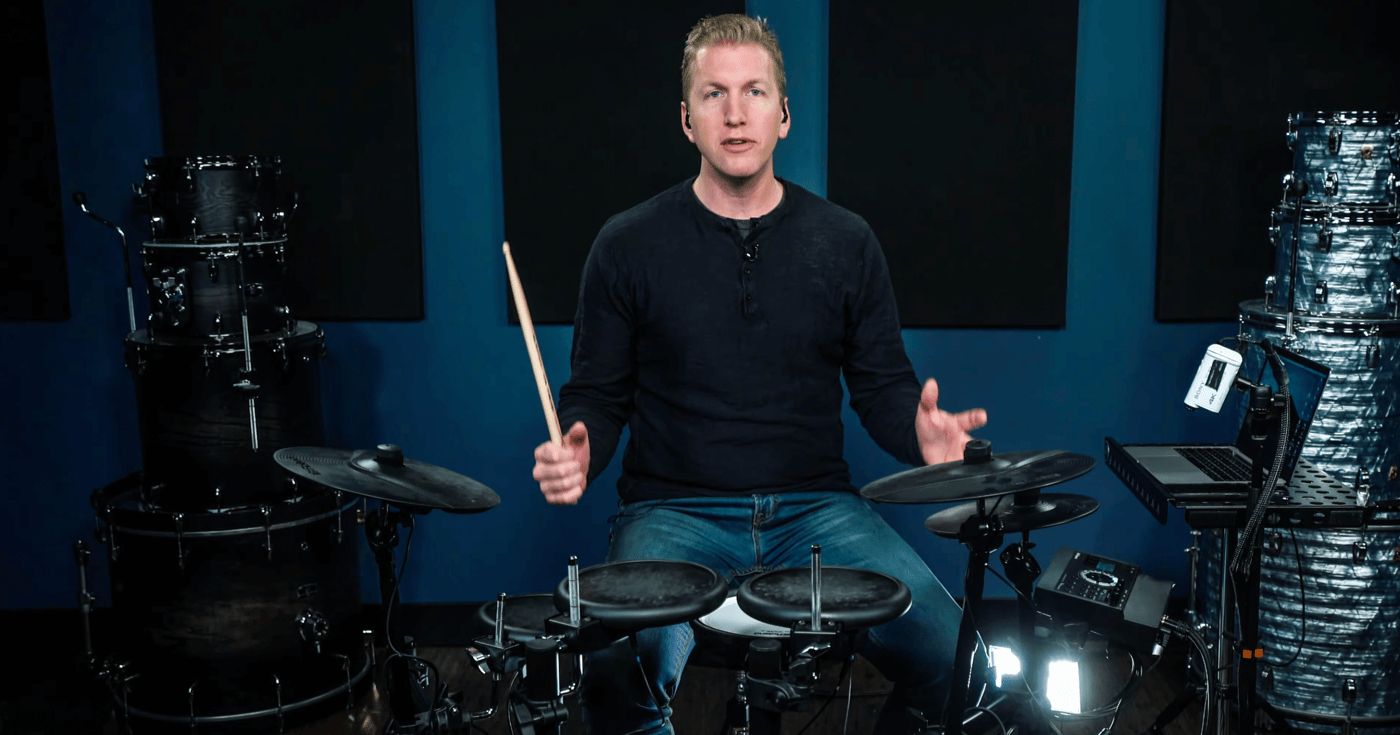
More than 50% of new drums sold are electronic drums. They’re compact, they’re quiet, and whether you’re using them as your primary instrument or to practice when you’re away from your acoustic kit, they’re amazing for learning, rehearsing, gigging and recording.
If you’re just starting to play electronic drums, here are some tips to consider:
Normal earbuds can disrupt the experience by not blocking out enough external noise. A good pair of headphones or in-ear monitors is well worth the investment.
Instead of settling for the sounds ‘right out of the box’, read the manual and look for video walkthroughs. See what others are doing with their module to customize and get most out of it so it’s a better fit for you and your playing style.
While different tip materials and shapes can change the way things sound on an acoustic kit and metal cymbals, they don’t impact the sound on an electronic kit. But if your pads have mesh heads, consider using nylon tips as wooden tips could damage the mesh if they splinter.
Some people find that felt beaters can wear out a mesh bass drum head faster, so you might want to use a plastic or wood beater instead.
For those who want to move back and forth from playing an electronic kit to playing on an acoustic kit, keep dynamic limb independence in mind. If you’re used to practicing on pads and want to increase the volume on one drum or cymbal, all you have to do is increase the volume. But when you move to an acoustic kit, as an example, you might end up playing the hi-hat or snare too loud. Try using just one side of your headphones and listen to how hard or soft you actually hit the rubber pads and refine your playing from there.
You’ll notice there’s a different rebound on an electronic pad compared to an acoustic drum. Most pads will feel the same from one to another, but an acoustic snare drum and acoustic toms won’t have as much rebound as each other, or as much rebound, period. You might notice that you ‘sound’ and ‘play’ better on the electronic kit. Keep that in mind if you’ll be using both so you don’t get complacent!
If you’re used to just turning on a module and having your toms already sound great, and then you decide that you want to also play acoustic drums, you should develop your ear and practice tuning. You’re going to have a very different experience on an acoustic kit – where you can’t change the sound with the push of a button.
If you’re switching between electronic and acoustic drums, you’ll notice that electronic kits are typically more compact and have less space between each drum. Set up your electronic kit with spacing that matches your acoustic kit to give you an easier transition.
Electronic drums aren’t only making drumming more accessible for more people – they can also provide you with endless options as your primary kit. Make it your own!


By signing up you’ll also receive our ongoing free lessons and special offers. Don’t worry, we value your privacy and you can unsubscribe at any time.
We use cookies for traffic data and advertising. Cookie Policy »